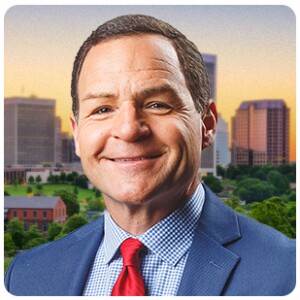RICHMOND, Va. -- The Virginia War Memorial in Richmond is a beautiful and solemn place for silence speaks for itself. But hidden deep inside this landmark fresh, voices are adding new chapters to a defining moment of World War II.
As curators and archivists were preparing the D-Day Plus 80 exhibit, the team made a discovery locked away for a quarter of a century.
“Almost nobody has heard these stories,” Virginia War Memorial Executive Director Clay Mountcastle said. ”This is the actual history to tell you what it was like and what they experienced.”
Mountcastle said interviews with 43 veterans of the Normandy invasion are now playing for the very first time.
“It is incredibly riveting to hear what they went through,” Mountcastle said. “So it was amazing to us. It kind of was this moment where we realized ‘Oh my goodness. Look what we have. We have to share this with everybody.’”
The recordings include U.S. Army nurse 1st Lt. Ruth Puryear.
“Then the commanding officer came in with a radio. We heard Eisenhower’s speech to the troops. The invasion of France had begun," the Richmond was recorded saying.
U.S. Navy sailor StM1c Jerry Gaiter from Richmond, who was serving on a destroyer off the coast of D-Day, provided another voice from the past.
“Finally about noon they called us in for bombardment and we went in and bombarded the beach," he said. "It was pretty rough that first day.”
The raw conversations were recorded in the late 1990s and early 2000s as part of the Virginians at War series used in high schools across the Commonwealth.
PFC Arthur “Art” Schintzel with the 1st Infantry from Williamsburg was wounded 11 times on D-Day.
“The ramps went down and the bullets came in,” Schintzel said. “It wasn’t long before I received a bullet wound in my left forearm.”
“They were aiming at your body and legs and all so they could put you out of commission," PFC Henry Myers from Halifax remembered. "As it went on through the day, I passed out I lost so much blood.”
The unedited portions of the interviews were sitting in storage waiting to be found. Hours of stories from soldiers, sailors, nurses, pilots and paratroopers detailing June 6th, 1944 and the battles beyond have been digitized.
“That is when I saw the carnage on the beach what it looked like. The landing craft. Two tanks on fire. Bodies washing in the surf," SSgt Bob Slaughter from Roanoke said in one recording.
1st Lt. Evelyn Kowalchuck recalled sleeping in a foxhole on Omaha Beach. The U.S. Army Nurse was haunted by what she witnessed trying to save lives.
“We had at times what we call sucking wounds. Chest wounds. Or head wound. When we came home to say England for the night very little was said,” said Kowalchuck. “We just laid there and cried. Something that most of us did.”
It is estimated only 5% of the Memorial’s D-Day interviews were ever viewed.
Glider Pilot Guy DeGenaro, from Richmond, survived delivering infantry into the heart of German-held territory. Fellow pilots weren’t so lucky.
“For a minute or so you don’t know if you’re going to be alive or dead,” Degenaro said. “That was something that stayed with me for the rest of my life.”
Memorial archivist Sylvia Marshall called these rare recordings audio and video a treasure.
“The fact that oral histories are so rarely linear you’re getting a more personal perspective of that day,” Marshall said. “And they were able to really speak to their experiences and speak to this powerful moment of history.”
T/Sgt. Raymond Mays remembers losing a good friend in the hedgerows.
“Bless his heart. A week or ten days later he lost his life,” the Richmond man said. “That was the end of our friendship at that time. He was a great man. A great man.”
Director of Exhibits and Collections Jesse Smith said preserving the stories was priority one.
“Some of these interviews give accounts like none other,” Smith said. “When we converted them to digital some of them were choppy. They would skip. So you could tell the tape was starting to break down.”
Had the recordings been damaged beyond repair, these tales could not be retold.
“Unfortunately when our veterans pass away they take their stories with them,” Smith said.
“Sadly, none of these veterans are still with us today,” Mountcastle added. “That underscores just how important it is to capture those stories when you can.”
By safeguarding and sharing these memories the legacy of these eyewitnesses endures.
“What a sight. Everybody shooting around you. Shells landing around you. Other small boats blowing up,” U.S. Navy Sailor Gerald Thomspson, from Staunton, said.
“This is invaluable to understanding our history. Not just as Virginians but as Americans. When you hear somebody tell their story it's like they’re still with us,” Mountcastle said. ”There is no substitute.”
They are new voices from Normandy and stories from D-Day that echo across the decades.
The “D+80” exhibit is open to the public at the Virginia War Memorial. Admission is free.






